A List of My Favourite Art Direction Inspiration Resources
Over 30 of my exact inspiration sources from tools, magazines and specific websites.
I've been wanting to write an article like this for a while but kept coming up with different ones. It's one of my most asked questions: where do you get all your inspiration and images from? And I'd get overwhelmed thinking about where exactly I get it from.
The truth is, I get it from anywhere and everywhere. Some sources are really random, something I've seen on the streets, heard in a conversation with friends, read somewhere random, or watched in a documentary. Getting inspired means allowing yourself to be inspired. If you go on a walk and let yourself be influenced by the colours and textures around you, you will be. In this newsletter, I will be sharing how to get inspired in the first part and the different types of inspiration.
In the second part, for paid subscribers, I will be listing exactly where I get my inspiration resources from, with links, including online tools, websites, and programmes that organise mine. From books, magazines, websites, to hacks. Be prepared, it's a long list that can be beneficial for graphic designers, strategists, creatives, and more.
I’ve touched on the importance of getting inspired by everyday cues in the second Visual Playbook linked below.
Visual Playbook #2
Welcome to the second edition of Visual Playbook, an exclusive series for paid subscribers where I share art direction ideas, techniques, and mood boards that can serve as a foundation for your own projects. This series is hopefully there to inspire you and look at images in a way you haven’t done before, or use it as a starting point for a new project/concept, whether that’s a brand campaign, editorial or personal project.
Of course, there are a list of resources I visit regularly to get my newest most current updates. There are 3 types of inspiration you need to feed I would say:
1) things that are new and currently going on in the world, it’s the newest campaigns, upcoming models, new brands but not just those things. You also need to know what is going on in the world, what are the political- and economical changes and the current zeitgeist. Today, surrounding yourself by the news and political- and economical changes definitely won’t feel as the most inspiring, it’s depressing, sad and I have no words with where our world is going. But.. It is very important, because something that might fed you up, frustrate or hurt you can be put into a passion project that is used for good and can help others with your creativity. Whether it’s awareness, a fundraise, an event or organisation that brings people together through xyz. Often a creative solution comes from a problem, and of course creativity won’t ever solve world issues, it will bring awareness and spark a conversation about it.
2) creative inspiration that feeds you personally, so not just what is trending and new, but the photographers, make-up artists, movement directors, graphic designers, fashion brands and so on that inspire you on a personal level. It’s them you want to work with in the future or the brands you want as your dream clients. As I said earlier in my building your art direction list posts, I usually divide by my clients and then I have one for personal inspiration. I have a couple of recurring brands I work for that are divided into categories like luxury fashion, sports, youth culture, etc. I divide my inspiration lists in folders or tabs like that (I love to say that, but in reality I organise it once in a while like that but most of it is just simply on my desktop haha). Whenever I get a briefing for a sports client and they want to elevate their art direction, I would go to my luxury fashion list and pull one or two references that work. It all merges together in the end.
and 3) is inspiration from anywhere. This can be a paragraph you read in a history book that inspired you to dive deeper into a certain topic, a sport you love to do, nature, a discipline you love like food, skateboarding or painting and everything that doesn’t fall into category one and two. With this I would say this is ‘raw’ work, meaning information or an activity that doesn’t have a creative output yet. Like in my post from last week on building a circus-core editorial proposal together, it is important to step away from any fashion- or campaign imagery when building your project. Simply just look into the subject and find ‘raw’ information like images, quotes, hand-outs etc. Then analyse that and move on to finding specific things that you can find back in your creative output.
My inspiration
As my art direction work is mostly focused on Gen Z, (luxury) fashion, sports, youth culture and sometimes a bit of street, I get inspired a lot by social behaviour of the target group. I spend more time reading comment section than observing the content. I love to take inspiration by ‘online’ layouts and ways of doing and elevate it through art direction. Something that feels relatable, recognisable and playful.
A mood board I shared earlier on my notes called ‘chronically online, but make it art direction’ seen below. This is an example of inspiration that already has a creative output, but this is sometimes necessary to show to the client what the overall mood is. Then you can follow up with slides with layouts and inspiration from actual online screenshots and how you make it your own.
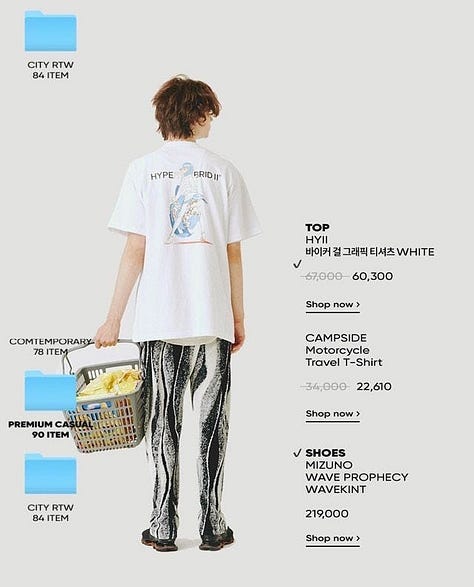
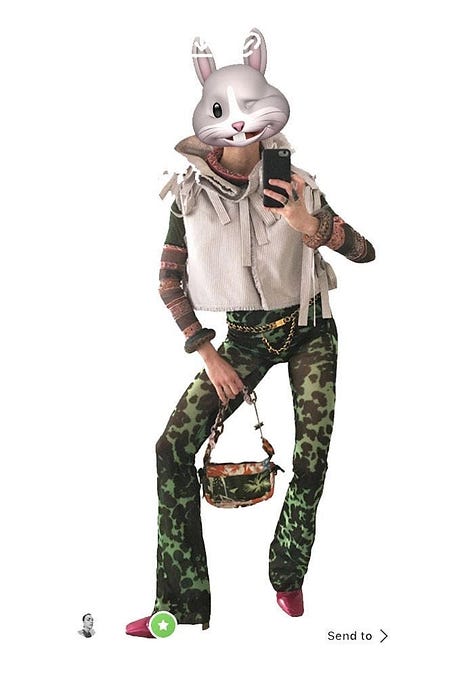
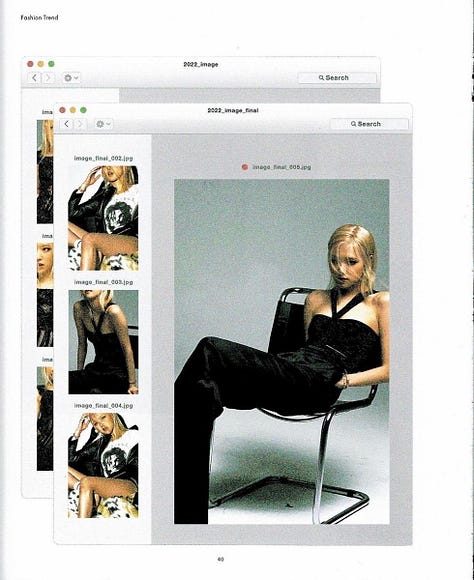
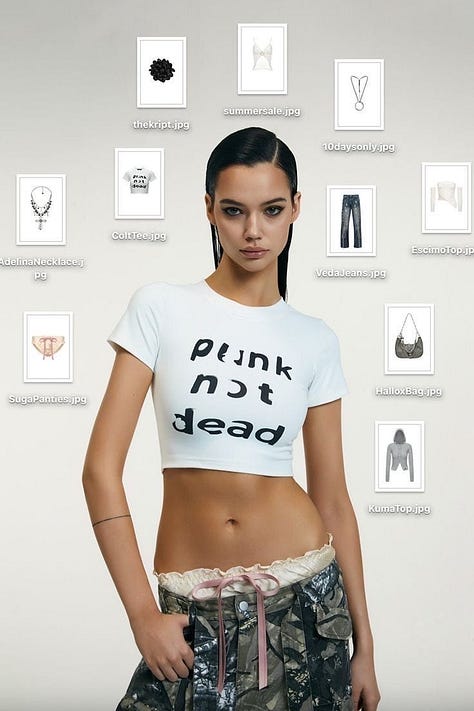
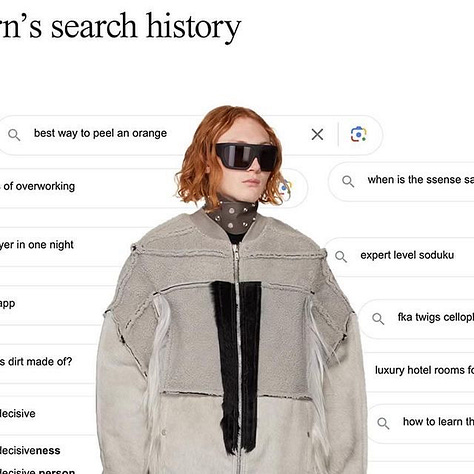
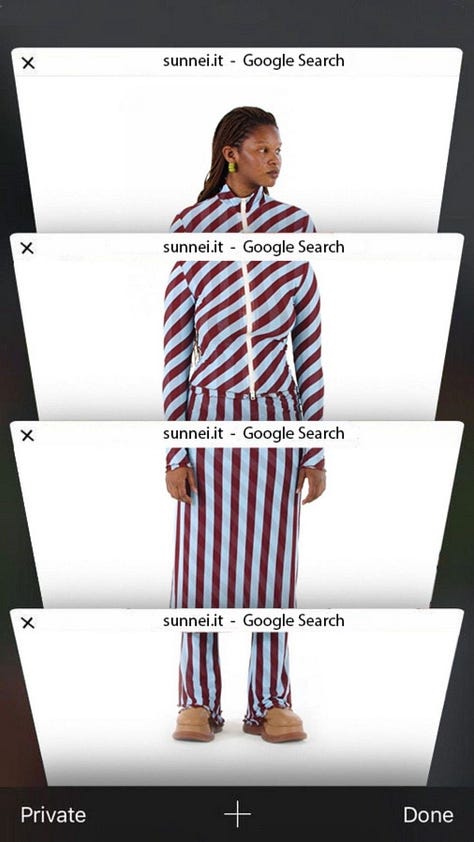
Some brands that I think do this style of (mostly social media content) well are Sunnei, SSENSE, goat, Ader ERROR, Adsb Andersson Bell, and Paloma Wool. I think these are great examples of social or online art direction, it’s playful, often quick content that can reuse images from ecom or the comms campaign and engaging. For this type of content, which are for art directors often ‘quick fire’ briefs, you have to make lots of concepts quickly, lower production budgets, quicker turn arounds and more playful. I save these type of things in a separate tab, because it is easier to access. I also do this on TikTok in my personal saves folder with references. This can be anything from campaign content to a creator doing a look book with fun transitions.
For bigger brand campaigns these type of references often don’t work. Bigger brand campaigns need to speak to all markets, across all channels like out of home, retail, website, social and much more and tend to be a bit more curated but less experimental. While social- and online campaigns often require reusing existing assets and adding a twist or having a limited budget to produce a local shoot with a relatively unknown photographer. The big brand campaigns is where you can get inspired by collaborators. For this I always look for faces that inspire me, models that I would love to push for when having the opportunity to cast. I find these on models.com or model polaroids and following big modelling agencies and casting directors on social media.
The second thing that is so important to me, and I often spend the most time on during pre-production is styling. I love styling, I love pushing the brand direction and the styling and making it as good as I can within the constraints of markets and internal politics. For me, styling is what sells the product, what adds the edge and the story. If the styling is shit, the overall campaign looks less appealing than it could be. I am not a stylist myself, but I do spend a lot of time curating my styling briefs and crafting a single-minded vision that is as specific as it can get so I know it is what I envision. Sometimes the clothes are already decided, but that doesn’t mean there can’t be styling references. Small tweaks like the way the item is layered or worn, how the socks sit and where the waistband is worn. I have a Pinterest board, a Vogue app folder, a TikTok list and lots of references across Instagram. Below some styling references that inspired me lately (in no context, not for a specific client in mind).
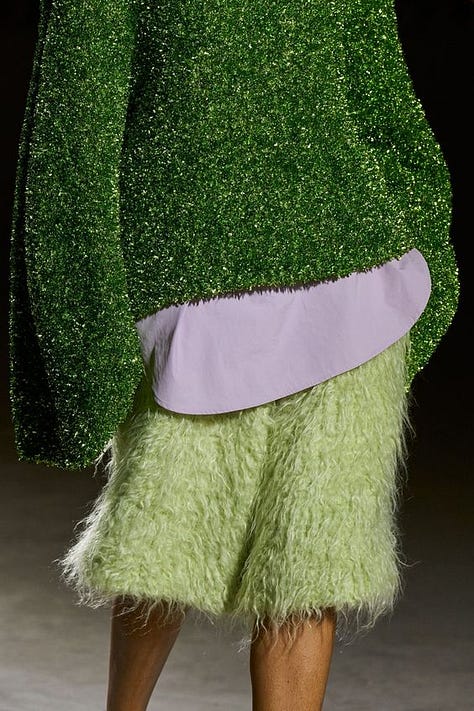

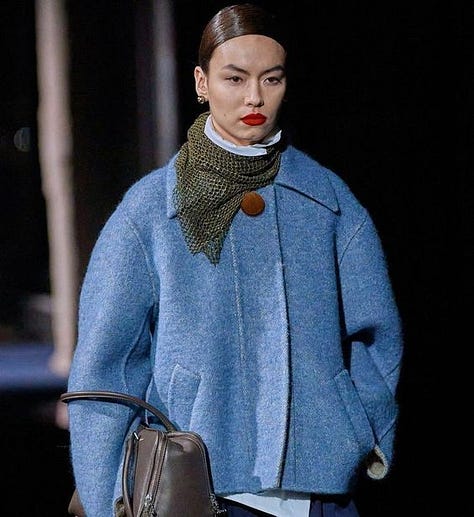
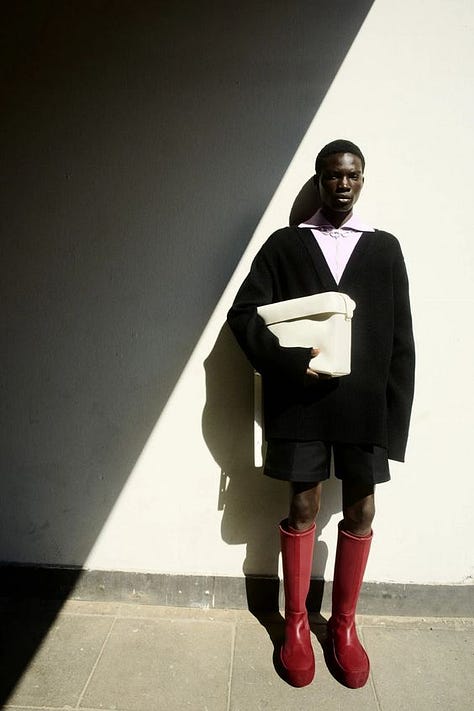

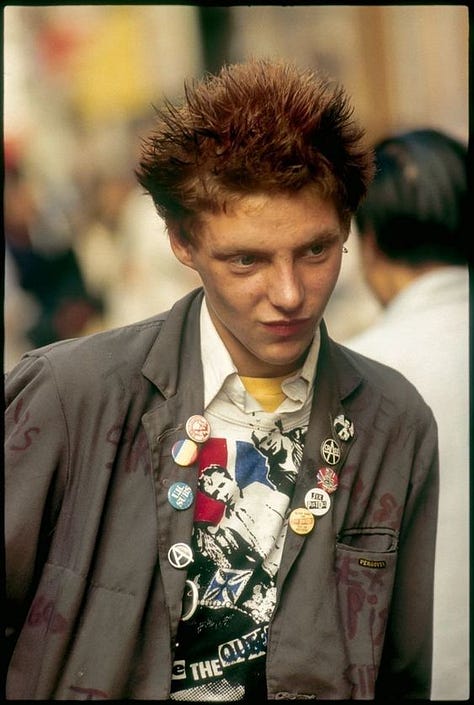
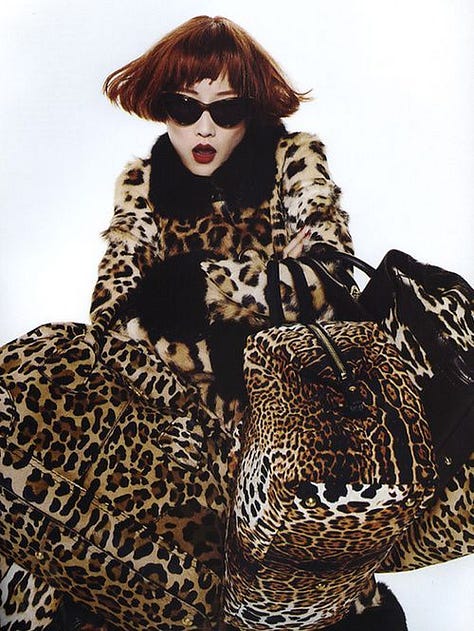
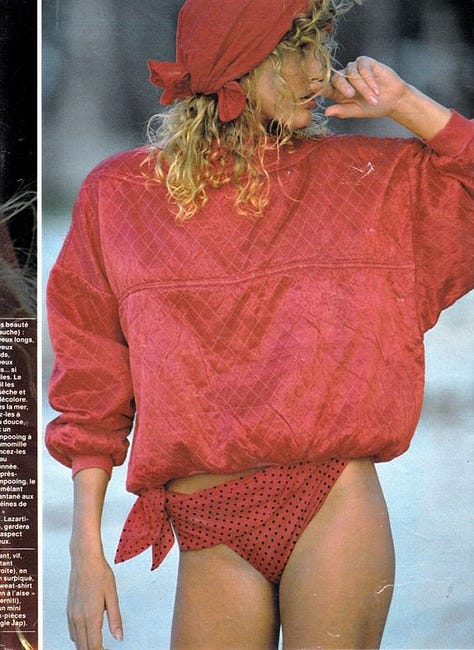
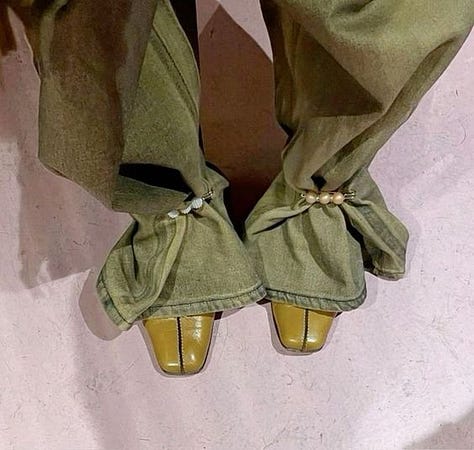
This also comes with stylists I follow that inspire me, not just follow but also dive deeper into their early works and evolution. Photographers of course, I have a huge list of photographers but I visit their websites every now and then to see what they are up to.
My interests
My inspiration doesn’t always come from other artists. I have a lot of interests that inspire my work, both professionally and personally. Even when I don’t directly look at references, it inspires my work and the images and stories I am drawn to unconsciously. I’ve always loved fashion history and the way brands reference their heritage, like Louis Vuitton and travel, Gucci and horses, Chanel and hats, to name the obvious few. It’s something I dig into very deep before working with a brand, so a campaign can be well-rounded story rather than ‘just a current idea’. I also love fashion history on a deeper level, where garments come from, the evolution of colours, the origin of fabrics and how it was brought to a specific cultural and generally everything’s cultural heritage.
Then, from following this newsletter you also probably know that I am a big DIY girly. I grew up with Rookie Mag and spend my entire childhood drawing, sewing, making things and customising. I have always been drawn to diy elements in both graphic design, but also photography feeling more analog and tactical. I also am inspired by skateboard culture, my dad used to be a skateboarder and I used to skate myself for a bit. I think this also ties back to DIY culture, but there is a lot to get inspired by in the skate industry. From deck graphics to the fashion, the heritage, old documentaries and ads from e.g. the Bones Brigade, and skate films. I love skateboarding magazines, stickers and the general energy of it. How they are able to see the world differently. When you skate, the world is a playground, a bench is not just a bench but an obstacle you can ride. The sport is very individual, yet so focused on community. There is a laid-back and chill energy around it, just like within surfing which to me is more vibrant and optimistic in a way. I have surfed and worked at a surf school, but only in the Netherlands (which is not the best and most beautiful surf country) so this is something not that authentic to me, but I do admire the inspiration and history of it.
I also get inspired by gaming, playing aesthetically pleasing games like Animal Crossing, MySims, Hello Kitty and Spirit Farer. The way the stories are told and the colours. It’s quite random, but I do feel like it has an impact on the way I see visuals in one way or another. The stylised colour schemes and storytelling. And lastly, reading novels inspires me as well. It’s not visual at all, yet I always imagine the story very visually. I love reading Japanese literature, as I feel like the stories are often so comforting and I love to leave everything up for interpretation as I’ve never been to Japan.
So these are my inspiration sources. This also depends per project, but my main personal ones always shine through in one way or another in my work. Maybe knowing all this, you look at my work and visuals in a different way.
Below I am listing over 30 of my exact sources where I find images, do my research, online tools I use, magazines and books. From representation agencies with lots of inspiration to niche websites. Consider upgrading to paid to get all the details. ❤️
If you don’t want to commit to a monthly or yearly subscription. You can also unlock this post here on buymeacoffee.com. If you are a reader and enjoy my newsletter, you can pledge your support here. ❤️ I would love to be able to create more content in the future and free up some time to fully focus on my newsletter content.







